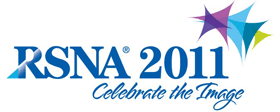
Abstract Archives of the RSNA, 2011
SST14-04
Doxycycline Sclerotherapy in Pediatric Lymphatic Malformations: Outcomes, Complications, and Clinical Efficacy
Scientific Formal (Paper) Presentations
Presented on December 2, 2011
Presented as part of SST14: Pediatrics (Interventional)
Arvind Kaur Shergill MBBS, Presenter: Nothing to Disclose
Philip John MBChB, FRCR, Abstract Co-Author: Nothing to Disclose
Joao Guilherme Amaral MD, Abstract Co-Author: Nothing to Disclose
Lymphatic malformations (LM’s) are congenital lesions of the lymphatic system and consist of lymphatic channels and cystic spaces of varying sizes. Recent evidence has shown that LM’s respond well to intralesional sclerotherapy. The purpose of this retrospective study is to evaluate the outcome and efficacy of using Doxycycline for treating pediatric macrocystic, microcystic and combined LM’s in a tertiary care pediatric centre.
50 patients (32 males and 18 females) who underwent sclerotherapy using Doxycycline for treatment of LM’s during January 2005 and October 2010 were identified. The demographics, clinical details, previous treatment, pre-treatment imaging, present doxycycline treatment details including dose/ body weight/ treatment, number of treatments, concomitant use of Sodium tetradecyl sulfate (STS), complications, clinical and radiologic follow up were recorded. Patients with lesion recurrence/ persistent macrocysts/ cysts amenable to further treatment were offered more sessions of sclerotherapy.
Patient’s mean age at the first treatment was 5.9 years (range 3 days - 17.8 years) with a median of 4.2 years. The most common lesion location was cervicofacial in 38% followed by the trunk in 32% .
A total of 146 sclerotherapy sessions were performed with a mean of 2.9/ patient (range 1-7). The mean doxycycline dose/kg body weight for all procedures was 15.3/mg/kg (range 0.55-85.71). Complications were seen in 19 [2 major (Horner’s syndrome and severe pain/ tachycardia/ hypertension) and 17 minor] out of the 146 sessions.
The mean clinical follow up time between the last treatment and the follow up visit was 1.2 years (range 42 days- 4.7 years). On follow up excellent clinical results were seen in 88% (14/16) patients with macrocystic LM’s, 74% (20/27) of combined type and 57% (4/7) of microcystic LM’s.
Doxycycline is an easily available, safe and effective sclerosant for treating LM’s in children with a low complication rate and high clinical success rate.
This study provides useful information (average dose/kg weight, safety, complications etc.) for using doxycycline as a sclerosant in treatment of pediatric macrocystic, microcystic and combined LM’s.
Shergill, A,
John, P,
Amaral, J,
Doxycycline Sclerotherapy in Pediatric Lymphatic Malformations: Outcomes, Complications, and Clinical Efficacy. Radiological Society of North America 2011 Scientific Assembly and Annual Meeting, November 26 - December 2, 2011 ,Chicago IL.
http://archive.rsna.org/2011/11009492.html

